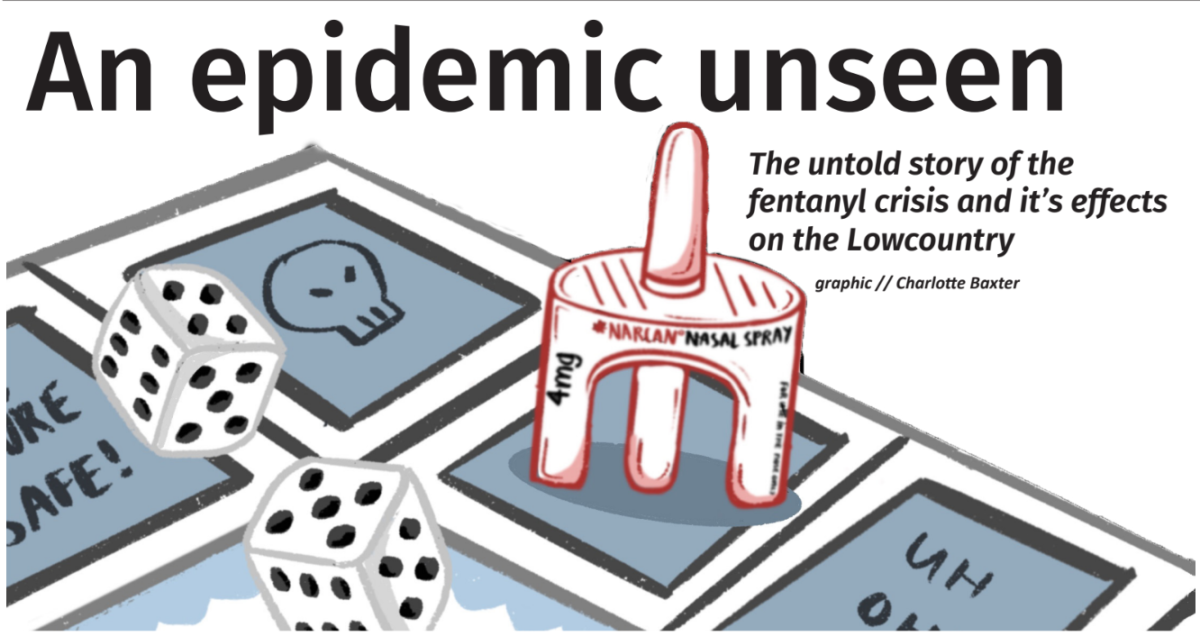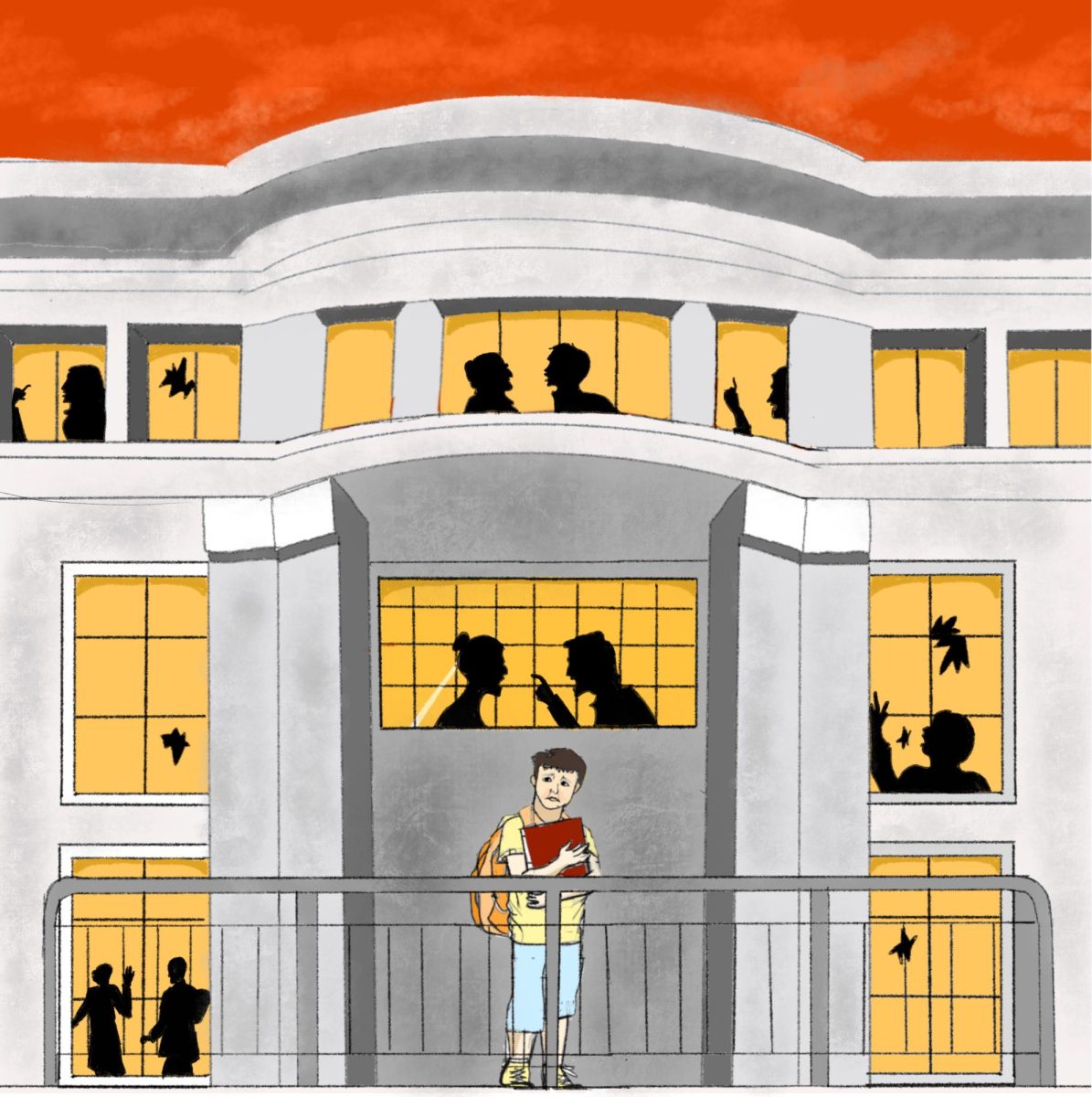He first found it lurking eight years ago. Hidden in confiscated drugs, special agent Tom Costanzo of the Drug Enforcement Administration saw within the lacing. A new white powder. Something sinister that he hadn’t seen before.
“We started noticing a white powdered substance that…we expected to be heroin. At that point, it was mainly black tar heroin… and all the sudden we saw the white powder,” Costanzo said. “We didn’t know what it was because it wasn’t testing for cocaine. We had to send it off to our lab to get tested, and sure enough it started coming back as fentanyl.”
Primarily used in the medical field, fentanyl is 50 to 100 times more potent than heroin and morphine. Overdoses related to fentanyl have increased over the past 10 years, and are showing no signs of delcine.
Costanzo said he believes that the sudden switch from one drug to another was caused by the restrictions in the pharmaceutical field.
“We started to see huge increases in opioid overdoses in general, primarily heroin. A lot of that results from a lot of the changes in the pharmaceutical controls industry at the time,” Costanzo said. “So people who are addicted to opioids, that are normally…from a doctor, they weren’t… easily accessible anymore because it was more restricted.”
With the restrictions, individuals found cheaper and more convenient ways to get what they wanted.
“China is one of the highest producers of fentanyl analogues… chemicals related to fentanyl, [and] synthetic opioids. So, [in the] United States, the primary source of fentanyl is coming from Mexican drug cartels,” Costanzo said.
For Costanzo, the sudden switch from heroin to fentanyl became clear.
“Fentanyl is [a] synthetic opioid, it’s made in a lab. So you can make as much of it as possible, which causes the price to produce to decrease. So it’s cheaper. And if you consider the fact that it’s 50 to 100 times more potent than other opioids, from a business standpoint, it makes more sense. It’s more reliable, it’s more profitable. So that’s why I think that’s a big part… [of] the transition,” Costanzo said.
For emergency room doctor Charles Staples, he has seen the use of fentanyl from both a medical and abusive standpoint. In the medical field, when fentanyl is used properly and safely, it can help a patient with serve pain. However, doctors like Staples know the safest amount a patient can take, while outside of that, the concentration can be deadly.
“So what happens is the drug dealers there… make a lot of fentanyl, it’s coming from south of the border with Mexico, Central Southern America. And they have huge factories where they make it,” Staples said. “It’s not the same as Johnson and Johnson or… a drug company making [it in] their lab. You really don’t know what concentration…you’re getting. So the danger is mainly… respiratory depression.”
With unknown amounts of fentanyl laced inside a drug, loss of oxygen to vital organs can bring an immediate death to any- one taking it.
“Fentanyl just seems to be a supply and demand.. But what they’re also doing is selling cheaper drugs, and they’ll add it in there. And whoever’s buying it won’t know it,” Staples said. “But if they take too much…they’ll basically…stop breathing. If you stop breathing, you don’t get oxygen, your heart stops, then your brain suffers permanent injury and this kind of sequence of events.”
Since working in the ER, Staples has seen a range of overdoses from as young as 3 years old, getting into the parents’ narcotics, to young adults.
“You also see just the lives that are wrecked. Most [of] these people lost their driver’s license privileges, they have some old ID and you can look at the transformation, just the decline of them physically with the narcotic use and other use…but that it just ruins people’s lives,” Staples said.
With fentanyl cases on the rise through- out the Lowcountry, Charleston County School District’s prevention intervention coordinator, Linda Ballinger, has adapted in order to spread more awareness throughout all levels of education.
“I am providing different levels of prevention. [The preventions are] primary, secondary, and tertiary prevention and the primary prevention, I’m working with our department and trying to come up with substance use prevention activities, especially for the elementary and the middle school,” Ballinger said.
While working within the district, Ballinger said how it’s important for teachers and the administration to be aware of what is going on in the community. By providing workshops and training, the schools are able to become more aware of abuse trends and how it affects the area.
“All of Charleston County and I actually just got a report from the DEA that showed that six out of 10 pills now are containing fentanyl [a lethal dose], whereas before like a year ago, it was at four out of 10 which is still too many,” Ballinger said. “We definitely need to raise awareness around it.
We have lost children within our own district, within our own communities that have had fentanyl poisoning.”
As of August, the South Carolina state legislature passed a law allowing schools to update the list of life-saving medications and further train staff on how to use them. Among this list is the nasal spray naloxone, or better known as Narcan.
Narcan is one of the very few ways to treat someone with an overdose. Being an opioid antagonist, it binds with the opioid receptor and quickly reverses the effects.
“A study done years and years ago said that basically someone has altered mental status or they’re unresponsive, and their pupils are small, and they’re not breathing, you have two out of three of those, you should give the antidote Narcan because it’s a high risk,” Staples said.
This past summer, CCSD school nurses all came together to receive training on how to use and handle the Narcan bottles. Nurse Andrea Urbanski has recently gone through training on how to handle the Narcan nasal spray. Even with this new change for school nurses, knowing when and how to use it is key. Depending on the person’s breathing situation, and how much opiate is in their system, will determine how much Narcan spray can be put into their system in hopes to counteract the overdose.
“Basic idea is that it goes in, and so your receptors that you have… the opiate piece gets bumped out, and replaced by this,” Urbanski said. “Opiates cause all sorts of things. They block pain, but they also slow down your GI system, they slow down your respiratory rate, up to the point where you’ve stopped breathing… The whole [point] of it so you can put somebody in withdrawal…after you get somebody alive and in withdrawal… much better scenario than someone who’s not breathing.”
Despite steps towards hopeful improvement, the numbers of people dying from fentanyl overdoses have yet to decrease. Fentanyl has affected all age groups and demographics across the U.S..
“To me, it’s very scary that these numbers aren’t getting any better. We are setting record highs every single year,” Costanzo said. “I think it’s extremely important that we educate people on what addiction is, what it means, the signs of addiction, and how deadly fentanyl and fentanyl related jobs can be.
It’s a very, very scary time.”






